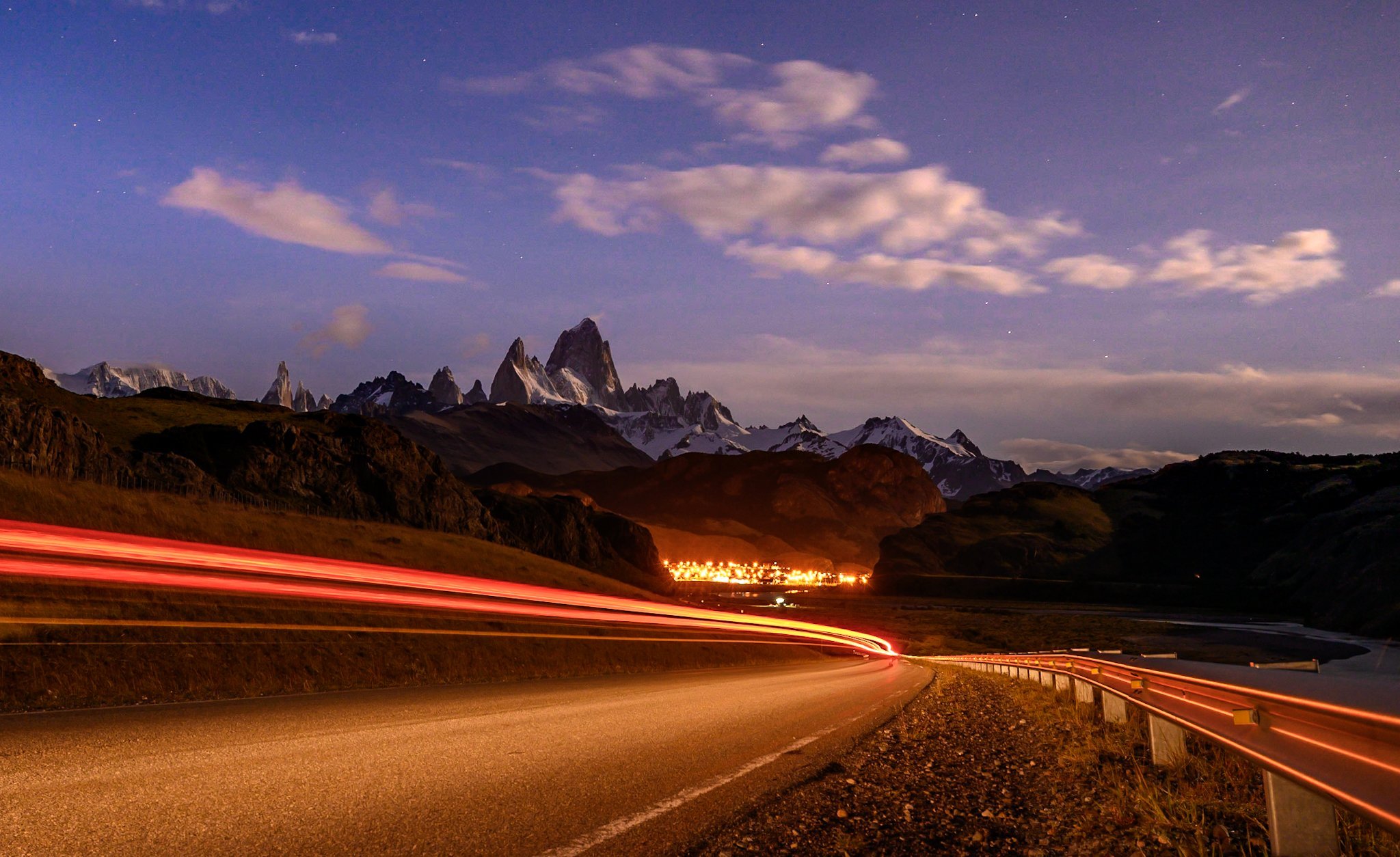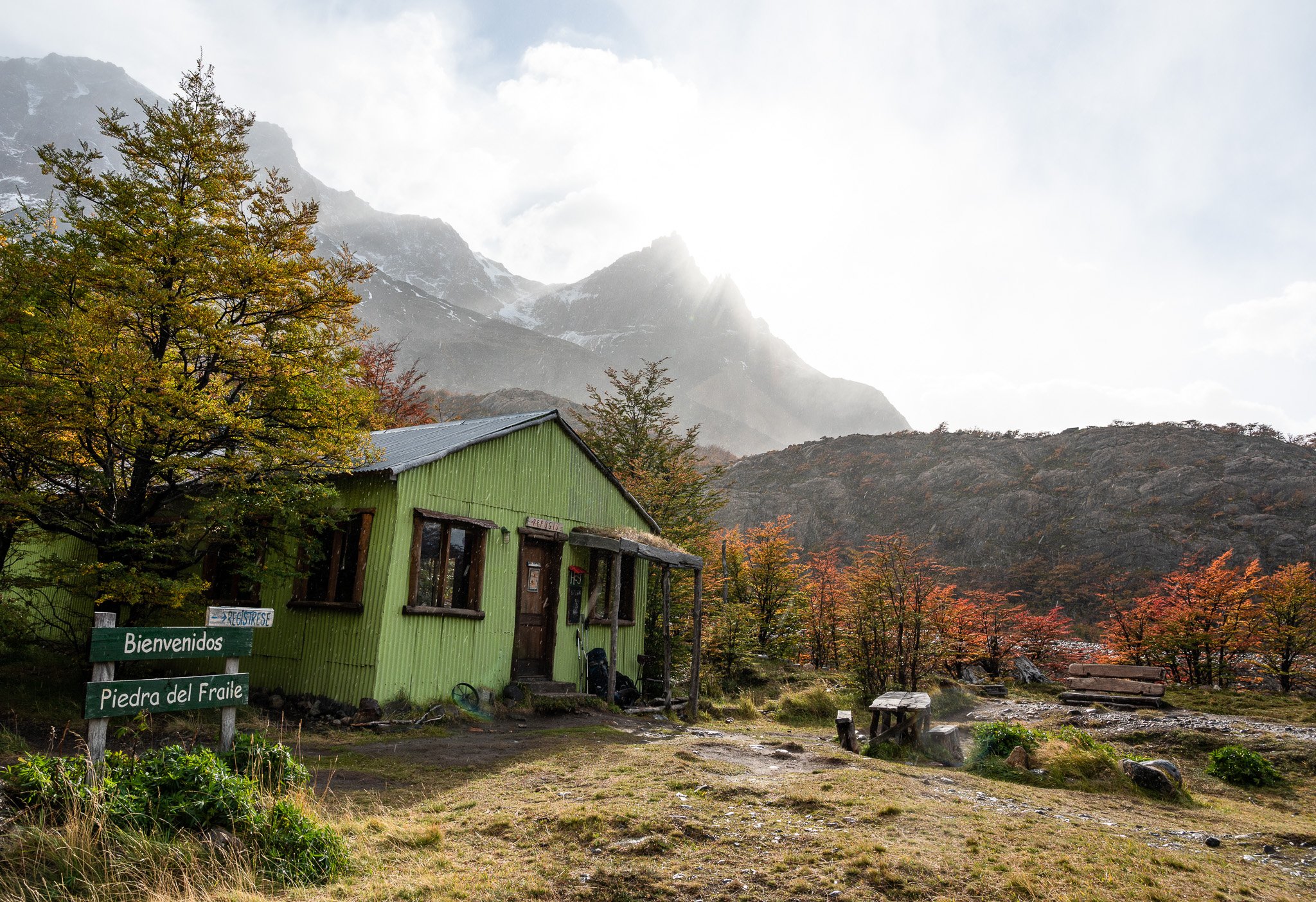HOME ON THE OTHER SIDE OF THE WORLD
El Chaltén: The hiking capital of Argentina, bustling with tourism from December to February for good reason.
El Chaltén and the surrounding Los Glaciares National Park offer endless adventures for nature enthusiasts. Despite its popularity, the town retains its charm and soul. Most of its approximately thousand residents moved here for their love of the mountains, seeking tranquillity and adventure. This mountain spirit remains strong.
-
Founded in 1985, El Chaltén is Argentina's youngest town. The original Aonikenk people, who avoided this area due to their beliefs, named the prominent peak "Chaltén," meaning "Sacred Mountain" or “Smoking Mountain.” Today, this peak is known as Fitz Roy, and along with the neighbouring Poincenot, it serves as a major landmark, inspiring the Patagonia sports brand's logo.
The area gained attention in 1932 when Italian explorer Alberto D'Agostini began documenting the region's geology and landscapes. His work attracted climbers and hikers from around the world, who began to establish trails and climbing routes on these breathtaking mountains.
El Chaltén is a place that quickly enchants visitors. My initial plan was to stay for just five days in January 2020, but I ended up spending over three weeks here, returning for another week after travelling to Ushuaia, and now, I've returned once more for nearly a month with my dad. The more you explore, the more you realize there's so much more to discover. The community and atmosphere of El Chaltén are exceptional, and I’ve met some of the most interesting people here, many of whom are now friends.
As I leave El Chaltén once again, watching the silhouette of the mountains fade, I know I'll return. My dad and I will be back to traverse the Southern Patagonian Ice Field, climb some peaks with crampons and ice axes, and share a beer with friends.
Over time, Hostel Wenüy has truly felt like home. I can't recommend it enough for anyone who loves friendly and chill vibes. From the moment I first stepped through the door, Romina and Pato, the hostel’s owners, made me feel welcome. Now, with the fantastic additions of Nuria, Victor, and Denis, the team has only made the experience even better. Thank you all for everything, and see you soon!
Refugio Piedra del Fraile is just a short hike from the main road, nestled in the beautiful valley of Río Eléctrico. The hiking and climbing opportunities here are virtually limitless. The refuge, run by some truly amazing people, offers not only great food but also an authentic mountain vibe that enhances the overall experience.
Weather in the Río Eléctrico valley is notoriously unpredictable, largely due to its proximity to the Southern Patagonian Ice Field, only shielded by Paso Marconi. On my second visit, we were greeted by strong gusts of wind and icy rain as we walked to Lago Eléctrico and Laguna Pollone. Despite the challenging conditions, the occasional bursts of sunshine created magical moments, making the rugged landscape even more enchanting.
Fitz Roy, renamed by Perito Moreno during his 1877 expedition, stands as one of the most iconic mountains globally. Originally known as Chaltén, meaning "Smoking Mountain" due to a rare aeolic phenomenon that often cloaks its summit in clouds, Fitz Roy’s northern face from Piedra Negra offers a less-frequented yet breathtaking perspective. The serenity of this spot made it one of my favorite hikes in the region.
The Río Eléctrico valley in autumn is a stunning tapestry of vibrant colors.
Beer always leads to great ideas. Walking back to the hostel after a third round of beer at 10 p.m., we saw a rarely clear sky with the moon illuminating Fitz Roy in the distance. Eureka! Everyone climbs Laguna de los Tres, the most popular viewpoint, for sunrise or during the day, so why not do things differently? Three hours later, we were at the top, sipping mate, admiring the lake and Fitz Roy with just the four of us—no crowds. Spotting a puma running away as we returned around 3 a.m. made the night even more magical.
Cerro Torre's history is a mystery. Italian climber Cesare Maestri claimed to have climbed it with Toni Egger (who died on the descent) in 1959, yet there was no evidence of their summit. Maestri returned in 1970 with a 150-kilogram petrol-driven compressed air drill to attach bolts to the side of the mountain; the machine remains frozen on the mountain's face.








